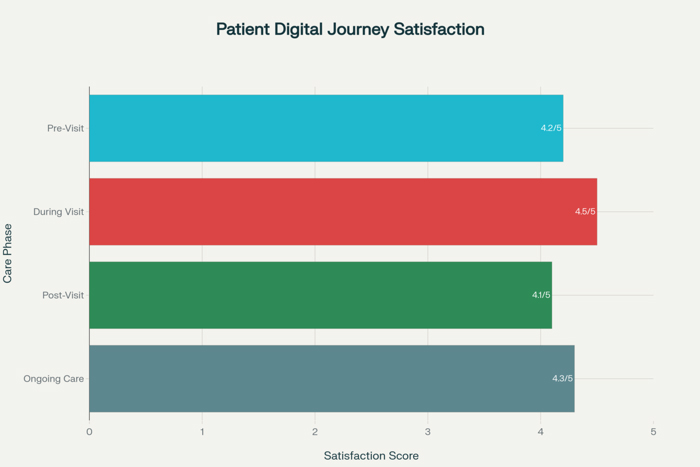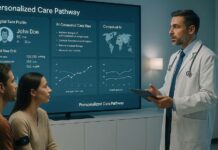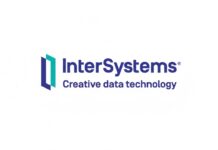Patient Experience in the Digital Age: Technology’s Role in Satisfaction and Engagement
The landscape of healthcare delivery has been fundamentally transformed by digital technologies that reshape every aspect of the patient experience, from initial appointment scheduling and clinical consultations to ongoing care management and health monitoring. Patient experience digital age technology encompasses a comprehensive array of digital touchpoints, platforms, and services that influence how patients interact with healthcare systems, access medical information, communicate with providers, and manage their health and wellness throughout their care journey. This technological transformation extends far beyond simple digitization of existing processes to create entirely new paradigms for patient engagement that emphasize convenience, personalization, accessibility, and empowerment.
Modern patients arrive at healthcare encounters with elevated expectations shaped by their experiences with digital services in other industries, including banking, retail, and hospitality, where seamless digital interactions have become standard practice. These patients expect healthcare organizations to provide similarly intuitive, efficient, and personalized digital experiences that accommodate their preferences for communication, information access, and service delivery while maintaining the high-touch, compassionate care that defines quality healthcare relationships.
Hospital administrators and healthcare leaders increasingly recognize that patient experience digital age technology requires strategic approaches that balance technological innovation with human-centered care delivery while ensuring that digital enhancements support rather than replace the fundamental therapeutic relationships between patients and healthcare providers. The challenge lies in leveraging technology to remove friction, improve convenience, and enhance communication while preserving the empathy, trust, and personal connection that patients value most in their healthcare experiences.
Digital Patient Journey Mapping

Understanding and optimizing the digital patient experience requires comprehensive mapping of patient journeys that identify all technological touchpoints, interactions, and opportunities for digital enhancement throughout the continuum of care. Digital patient journey mapping examines how patients discover healthcare services, schedule appointments, prepare for visits, engage during care encounters, and continue their health management between clinical interactions while identifying pain points, barriers, and opportunities for improvement through technology.
The pre-visit digital experience encompasses the initial patient interactions with healthcare organizations including online research, appointment scheduling, insurance verification, pre-registration, and care preparation activities that set expectations and influence patient satisfaction before any clinical encounter occurs. Digital optimization of these pre-visit processes can significantly impact patient perception and engagement while reducing administrative burden and improving operational efficiency.
During-visit digital experiences include technologies that enhance communication, streamline workflows, provide educational resources, and facilitate care coordination while patients are physically present in healthcare facilities. These technologies should enhance rather than interfere with clinical interactions while providing patients with greater access to information, more efficient service delivery, and improved communication with healthcare providers.
Post-visit digital engagement continues the patient relationship through follow-up communications, care plan management, medication adherence support, symptom monitoring, and ongoing health management activities that extend care delivery beyond traditional clinical encounters. These digital touchpoints provide opportunities for continued engagement while supporting patient self-management and preventive care initiatives that improve long-term health outcomes.
Omnichannel integration ensures that patients experience consistent, coordinated interactions across all digital and traditional touchpoints while maintaining continuity of information, preferences, and care history regardless of how they choose to engage with healthcare services. This integration requires sophisticated technology platforms and data management strategies that provide unified patient experiences across diverse interaction channels and communication methods.
Digital Communication and Engagement Platforms
Effective patient communication in the digital age requires sophisticated platforms that facilitate secure, convenient, and personalized interactions between patients and healthcare providers while accommodating diverse communication preferences and technological capabilities. Digital communication platforms must balance accessibility and usability with security and regulatory compliance while providing the functionality necessary for effective healthcare communication and care coordination.
Patient portal systems serve as central hubs for digital patient engagement by providing secure access to medical records, test results, appointment scheduling, medication management, and communication with healthcare providers. Modern patient portals must offer intuitive interfaces, mobile accessibility, and comprehensive functionality that enables patients to manage their healthcare digitally while maintaining security and privacy protections required by healthcare regulations.
Secure messaging capabilities enable efficient communication between patients and healthcare providers while reducing phone call volume, improving response times, and providing documented communication history that supports care coordination and continuity. These messaging systems must balance convenience with clinical workflow integration while ensuring that urgent medical concerns receive appropriate attention and response through established protocols.
Telemedicine and virtual care platforms expand access to healthcare services by enabling remote consultations, follow-up visits, and specialist consultations that reduce travel requirements and improve convenience for patients while maintaining quality clinical interactions. These platforms must provide reliable audio and video quality, user-friendly interfaces, and integration with Electronic Health Records while addressing licensing, reimbursement, and regulatory requirements for virtual care delivery.
Mobile health applications extend patient engagement beyond traditional healthcare settings by providing tools for symptom tracking, medication management, appointment reminders, educational content, and health monitoring that support continuous patient involvement in their care. These applications must provide value to patients while integrating with healthcare provider systems and maintaining security and privacy protections appropriate for health information.
Personalization and Patient-Centered Design
Digital patient experiences must be designed with deep understanding of patient needs, preferences, and capabilities while providing personalization options that accommodate diverse demographics, health conditions, and technological comfort levels. Patient-centered design approaches ensure that digital technologies enhance rather than complicate patient experiences while addressing accessibility requirements and usability considerations that enable all patients to benefit from digital healthcare services.
Personalization engines leverage patient data, preferences, and behaviors to customize digital experiences including content presentation, communication timing, educational resources, and service recommendations that align with individual patient needs and preferences. These personalization capabilities must balance customization with privacy protection while providing meaningful value that enhances patient engagement and satisfaction.
User experience design for healthcare applications requires specialized approaches that consider the unique context of healthcare interactions including emotional stress, privacy concerns, diverse user capabilities, and critical information needs that differ significantly from consumer applications in other industries. Healthcare user experience design must prioritize clarity, reliability, and accessibility while ensuring that digital interfaces support rather than impede effective healthcare communication and service delivery.
Accessibility considerations ensure that digital patient experiences accommodate patients with disabilities, varying technological literacy levels, and diverse linguistic and cultural backgrounds while providing equal access to digital healthcare services. These accessibility features must address visual, auditory, motor, and cognitive impairments while providing multilingual support and culturally appropriate content that serves diverse patient populations effectively.
Patient feedback and continuous improvement processes enable healthcare organizations to refine and optimize digital patient experiences based on actual user feedback, usage patterns, and satisfaction measures while identifying opportunities for enhancement and addressing problems that impact patient experience quality. These feedback mechanisms should provide multiple channels for patient input while establishing systematic processes for incorporating feedback into digital experience improvements.
Data Analytics and Experience Optimization
Understanding and improving patient experience digital age technology requires sophisticated analytics capabilities that track patient interactions, measure satisfaction levels, identify experience gaps, and provide insights for optimization initiatives. Digital experience analytics must combine quantitative usage data with qualitative feedback to create comprehensive understanding of patient experience while supporting evidence-based improvement strategies.
Patient experience metrics for digital services should encompass usability measures, satisfaction scores, engagement levels, completion rates, and outcome indicators that reflect the effectiveness of digital touchpoints in supporting patient goals and preferences. These metrics must provide actionable insights for improvement while enabling benchmarking and performance tracking over time.
Journey analytics examine patient pathways through digital services to identify bottlenecks, abandonment points, and friction areas that impact patient experience while revealing opportunities for streamlining and optimization. These analytical approaches should track patient behavior across multiple touchpoints while identifying patterns and trends that inform experience design and improvement initiatives.
Predictive analytics for patient experience can anticipate patient needs, identify at-risk patients, and recommend personalized interventions that enhance engagement and satisfaction while preventing negative experiences before they occur. These predictive capabilities should leverage patient data, historical patterns, and behavioral indicators to provide proactive support and personalized care recommendations.
Real-time monitoring and alerting systems enable healthcare organizations to identify and respond to patient experience issues immediately while providing opportunities for service recovery and relationship preservation when problems occur. These monitoring systems should track key experience indicators while providing automated alerts and escalation procedures that ensure timely response to patient concerns and technical issues.
Integration with Clinical Workflows
Successful patient experience digital age technology requires seamless integration with clinical workflows and provider systems to ensure that digital patient interactions enhance rather than complicate care delivery while providing healthcare providers with the information and tools necessary for effective patient communication and care coordination. This integration must balance patient convenience with clinical efficiency while maintaining the quality and safety standards that define effective healthcare delivery.
Electronic Health Record integration ensures that patient interactions through digital channels are documented appropriately and accessible to healthcare providers during clinical encounters while maintaining comprehensive patient records that support care continuity and quality. This integration should provide bidirectional information flow that enables providers to access patient-generated data while ensuring that clinical information is available through patient-facing digital services.
Clinical decision support integration enables digital patient experiences to provide personalized health information, care recommendations, and educational content that aligns with individual patient conditions and treatment plans while supporting evidence-based care delivery. These decision support capabilities should leverage clinical protocols and guidelines while providing patient-appropriate information that supports informed decision making and self-management.
Care team coordination through digital platforms enables healthcare providers to collaborate effectively around patient care while keeping patients informed and engaged in care planning and execution. These coordination capabilities should support multidisciplinary communication while providing patients with visibility into their care team and care plan while maintaining appropriate privacy and security protections.
Workflow optimization through digital patient services should reduce administrative burden on healthcare providers while improving efficiency and enabling more time for direct patient care activities. These optimizations should address documentation requirements, communication management, and routine care tasks while ensuring that digital solutions enhance rather than complicate clinical workflows and provider productivity.
Security, Privacy, and Regulatory Compliance
Patient experience digital age technology must address complex security, privacy, and regulatory requirements that protect patient information while enabling the digital interactions and data sharing necessary for effective digital healthcare experiences. These security and compliance considerations must be built into digital systems from the ground up while maintaining usability and accessibility that enables positive patient experiences.
HIPAA compliance for digital patient services requires comprehensive approaches to data protection, access controls, audit logging, and privacy safeguards that meet healthcare regulatory requirements while enabling the digital functionality necessary for effective patient engagement. These compliance measures must be implemented transparently to patients while providing assurance that their health information is protected appropriately.
Cybersecurity measures for patient-facing digital services must protect against threats including data breaches, identity theft, and system compromise while maintaining system availability and performance that supports reliable patient access to digital healthcare services. These security measures should be implemented without creating barriers to legitimate patient access while providing robust protection against evolving cyber threats.
Consent management systems enable patients to control how their health information is used for digital services while providing transparency about data collection, usage, and sharing practices that affect their digital healthcare experiences. These consent systems should provide granular control options while maintaining usability that enables patients to make informed decisions about their privacy preferences.
Data governance frameworks for patient digital services establish policies, procedures, and oversight mechanisms that ensure appropriate collection, use, and protection of patient data while supporting the digital functionality necessary for effective patient engagement. These governance frameworks should address data quality, access controls, retention policies, and usage monitoring while maintaining compliance with applicable regulations and ethical standards.
Measuring Success and Return on Investment
Demonstrating the value and impact of patient experience digital age technology requires comprehensive measurement frameworks that assess patient satisfaction, engagement outcomes, operational efficiency, and financial performance while providing evidence for continued investment in digital patient experience initiatives. These measurement approaches must capture both quantitative metrics and qualitative feedback while addressing short-term improvements and long-term strategic benefits.
Patient satisfaction measurement for digital services should encompass usability assessments, satisfaction surveys, net promoter scores, and qualitative feedback that reflect patient perceptions and experiences with digital healthcare services. These satisfaction measures should be tracked over time while enabling comparison with traditional service delivery methods and industry benchmarks.
Engagement metrics track patient utilization of digital services, feature adoption rates, session duration, and repeat usage patterns that indicate the value and effectiveness of digital patient experience initiatives. These engagement measures should provide insights into patient preferences and behavior while identifying opportunities for optimization and enhancement.
Operational impact measurement assesses how digital patient services affect healthcare delivery efficiency, staff productivity, resource utilization, and cost management while identifying benefits that extend beyond direct patient experience improvements. These operational measures should capture both direct cost savings and indirect efficiency gains while providing evidence of organizational value from digital patient experience investments.
Clinical outcome indicators examine whether digital patient engagement translates into improved health outcomes, better care adherence, reduced complications, and enhanced care quality while demonstrating the clinical value of patient experience technology investments. These outcome measures should establish connections between digital engagement and health improvements while controlling for other factors that influence patient outcomes.
The evolution of patient experiences digital age technology continues accelerating as new technologies emerge, patient expectations evolve, and healthcare delivery models adapt to changing conditions. Healthcare organizations that successfully implement comprehensive digital patient experience strategies position themselves to deliver superior patient satisfaction while achieving operational efficiencies and competitive advantages that support long-term success in an increasingly digital healthcare marketplace.


















